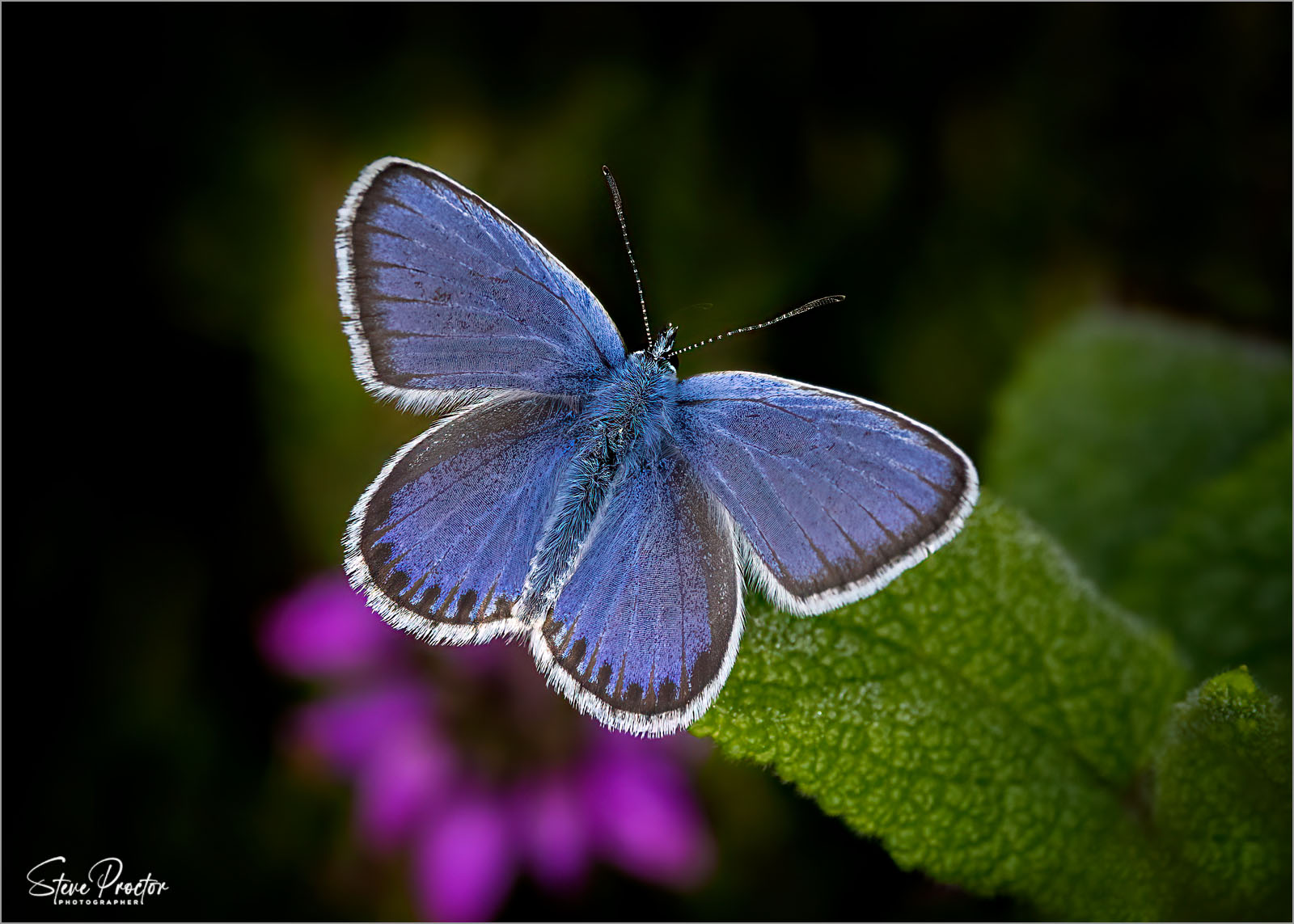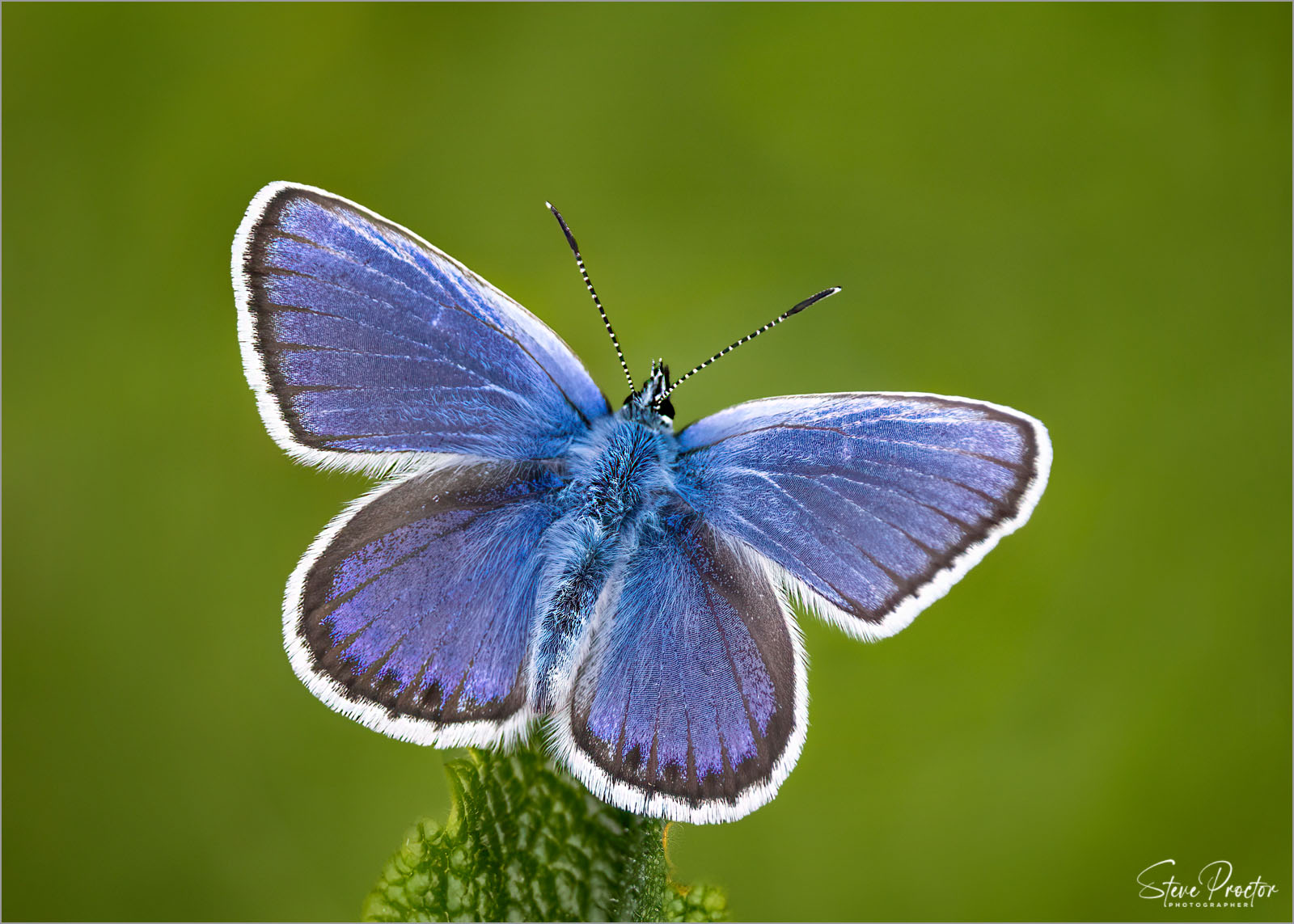A visit to Prees Heath Common to photograph some Silver-Studded Blue butterflies meant an early start – up and out by 2:30am no less! This is necessary as the butterflies warm up in the rising sun and then are in flight and more difficult to photograph.
Location: Prees Heath Common
The Common is the only remaining sanctuary for the Silver-studded Blue butterfly in the Midlands. This species is an emblem of lowland heath in Britain and it can be found on the Reserve in huge numbers during its flight season. As well as the Silver-studded Blue, the Reserve supports a vast array of other species of butterfly, moths, other invertebrates, birds, plants, mammals, reptiles and amphibians. Read more here.
Species: SIlver-Studded Blue
Silver-Studded Blue males are blue with a dark border. Females brown with a row of red spots. Undersides are brown-grey with black spots, a row of orange spots, and small greenish flecks on outer margin. This small butterfly is found mainly in heathland where the silvery-blue wings of the males provide a marvellous sight as they fly low over the heather. The females are brown and far less conspicuous but, like the male, have distinct metallic spots on the hindwing. In the late afternoon the adults often congregate to roost on sheltered bushes or grass tussocks. The Silver-studded Blue has a restricted distribution but occurs in large numbers in suitable heathland and coastal habitats. It has undergone a major decline through most of its range. Read more here.
It was fairly quiet compared to previous years with much fewer of the butterflies to be seen. Whilst we were waiting for the SSBs to emerge from their roosts amongst the heathers we took advantage of other species that could be spotted – there were tens of thousands of Six-Spotted Burnet moth catterpillars and chrysalis and I expect their to be a proffusion of these on the wing in the next few weeks. Among the other species, a Small Heath (now endangered) was poiinted out to us.
Technique: Focus Stacking
The images were largely produced by focus stacking the subject to produce a greater of depth of field whilst keeping the background fairly muted and lacking in detail. This involves taking a number (in this case between 8 – 20) of images at slightly differing focus points then combining them in software on the PC. I have produced a short tutorial on this here.






Some of the other species…



